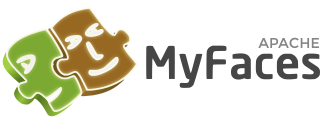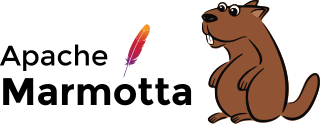The Jakarta Project created and maintained open source software for the Java platform. It operated as an umbrella project under the auspices of the Apache Software Foundation, and all Jakarta products are released under the Apache License. As of December 21, 2011 the Jakarta project was retired because no subprojects were remaining.

NetBeans is an integrated development environment (IDE) for Java. NetBeans allows applications to be developed from a set of modular software components called modules. NetBeans runs on Windows, macOS, Linux and Solaris. In addition to Java development, it has extensions for other languages like PHP, C, C++, HTML5, and JavaScript. Applications based on NetBeans, including the NetBeans IDE, can be extended by third party developers.

Apache Struts 1 is an open-source web application framework for developing Java EE web applications. It uses and extends the Java Servlet API to encourage developers to adopt a model–view–controller (MVC) architecture. It was originally created by Craig McClanahan and donated to the Apache Foundation in May 2000. Formerly located under the Apache Jakarta Project and known as Jakarta Struts, it became a top-level Apache project in 2005.

Craig R. McClanahan is a programmer and original author of the Apache Struts framework for building web applications. He was part of the expert group that defined the servlet 2.2, 2.3 and JSP 1.1, 1.2 specifications. He is also the architect of Tomcat's servlet container Catalina.

JSP Model 2 is a complex design pattern used in the design of Java Web applications which separates the display of content from the logic used to obtain and manipulate the content. Since Model 2 drives a separation between logic and display, it is usually associated with the model–view–controller (MVC) paradigm. While the exact form of the MVC "Model" was never specified by the Model 2 design, a number of publications recommend a formalized layer to contain MVC Model code. The Java BluePrints, for example, originally recommended using EJBs to encapsulate the MVC Model.
Apache Beehive is a discontinued Java Application Framework that was designed to simplify the development of Java EE-based applications. It makes use of various open-source projects at Apache such as XMLBeans. Apache Beehive uses Java 5, including JSR-175, a facility for annotating fields, methods, and classes so that they can be treated in special ways by runtime tools. It builds on the framework developed for BEA Systems Weblogic Workshop for its 8.1 series. BEA later decided to donate the code to Apache.
Apache HiveMind is an inversion of control (IOC) software project of the Apache Software Foundation written in Java. It takes the form of a services and configuration microkernel.

Apache Tapestry is an open-source component-oriented Java web application framework conceptually similar to JavaServer Faces and Apache Wicket. Tapestry was created by Howard Lewis Ship, and was adopted by the Apache Software Foundation as a top-level project in 2006.
Apache AxKit was an XML Apache publishing framework run by the Apache foundation written in Perl. It provided conversion from XML to any format, such as HTML, WAP or text using either W3C standard techniques, or flexible custom code.

Apache MyFaces is an Apache Software Foundation project that creates and maintains an open-source JavaServer Faces implementation, along with several libraries of JSF components that can be deployed on the core implementation. The project is divided into several sub-projects:
Barracuda MVC was an open-source web application framework for developing Java EE web applications that was an alternative to struts. The project is no longer active.
Apache CXF is an open source software project developing a Web services framework. It originated as the combination of Celtix developed by IONA Technologies and XFire developed by a team hosted at Codehaus in 2006. These two projects were combined at the Apache Software Foundation. The name "CXF" was derived by combining "Celtix" and "XFire".

Apache Sling is an open source Web framework for the Java platform designed to create content-centric applications on top of a JSR-170-compliant content repository such as Apache Jackrabbit. Apache Sling allows developers to deploy their application components as OSGi bundles or as scripts and templates in the content repository. Supported scripting languages are JSP, server-side JavaScript, Ruby, Velocity. The goal of Apache Sling is to expose content in the content repository as HTTP resources, fostering a RESTful style of application architecture.
Apache Click is a page and component oriented web application framework for the Java language and is built on top of the Java Servlet API.
Apache Cordova is a mobile application development framework created by Nitobi. Adobe Systems purchased Nitobi in 2011, rebranded it as PhoneGap, and later released an open-source version of the software called Apache Cordova. Apache Cordova enables software programmers to build hybrid web applications for mobile devices using CSS3, HTML5, and JavaScript, instead of relying on platform-specific APIs like those in Android, iOS, or Windows Phone. It enables the wrapping up of CSS, HTML, and JavaScript code depending on the platform of the device. It extends the features of HTML and JavaScript to work with the device. The resulting applications are hybrid, meaning that they are neither truly native mobile application nor purely Web-based. They are not native because all layout rendering is done via Web views instead of the platform's native UI framework. They are not Web apps because they are packaged as apps for distribution and have access to native device APIs. Mixing native and hybrid code snippets has been possible since version 1.9.

Apache Wink is a retired open source framework that enables development and consumption of REST style web services.
Apache Attic is a project of Apache Software Foundation to provide processes to make it clear when an Apache project has reached its end-of-life. The Attic project was created in November 2008. Also the retired projects can be retained.

Apache Marmotta is a linked data platform that comprises several components. In its most basic configuration it is a Linked Data server. Marmotta is one of the reference projects early implementing the new Linked Data Platform recommendation that is being developed by W3C.
Apache Struts 2 is an open-source web application framework for developing Java EE web applications. It uses and extends the Java Servlet API to encourage developers to adopt a model–view–controller (MVC) architecture. The WebWork framework spun off from Apache Struts 1 aiming to offer enhancements and refinements while retaining the same general architecture of the original Struts framework. In December 2005, it was announced that WebWork 2.2 was adopted as Apache Struts 2, which reached its first full release in February 2007.








